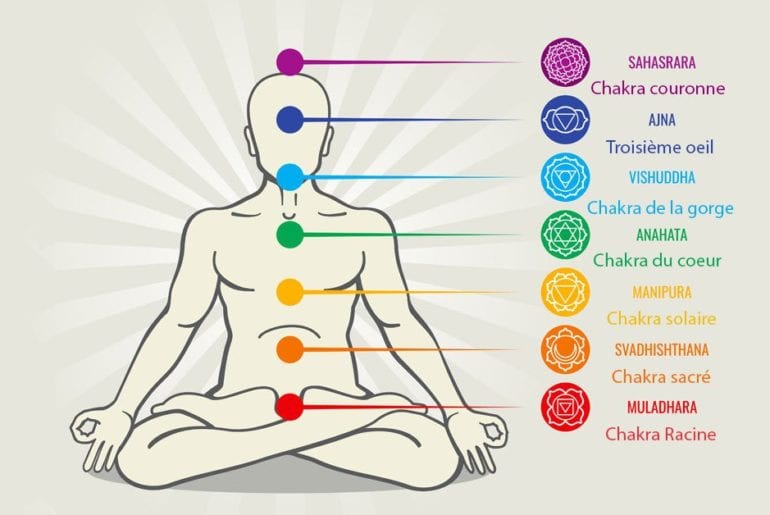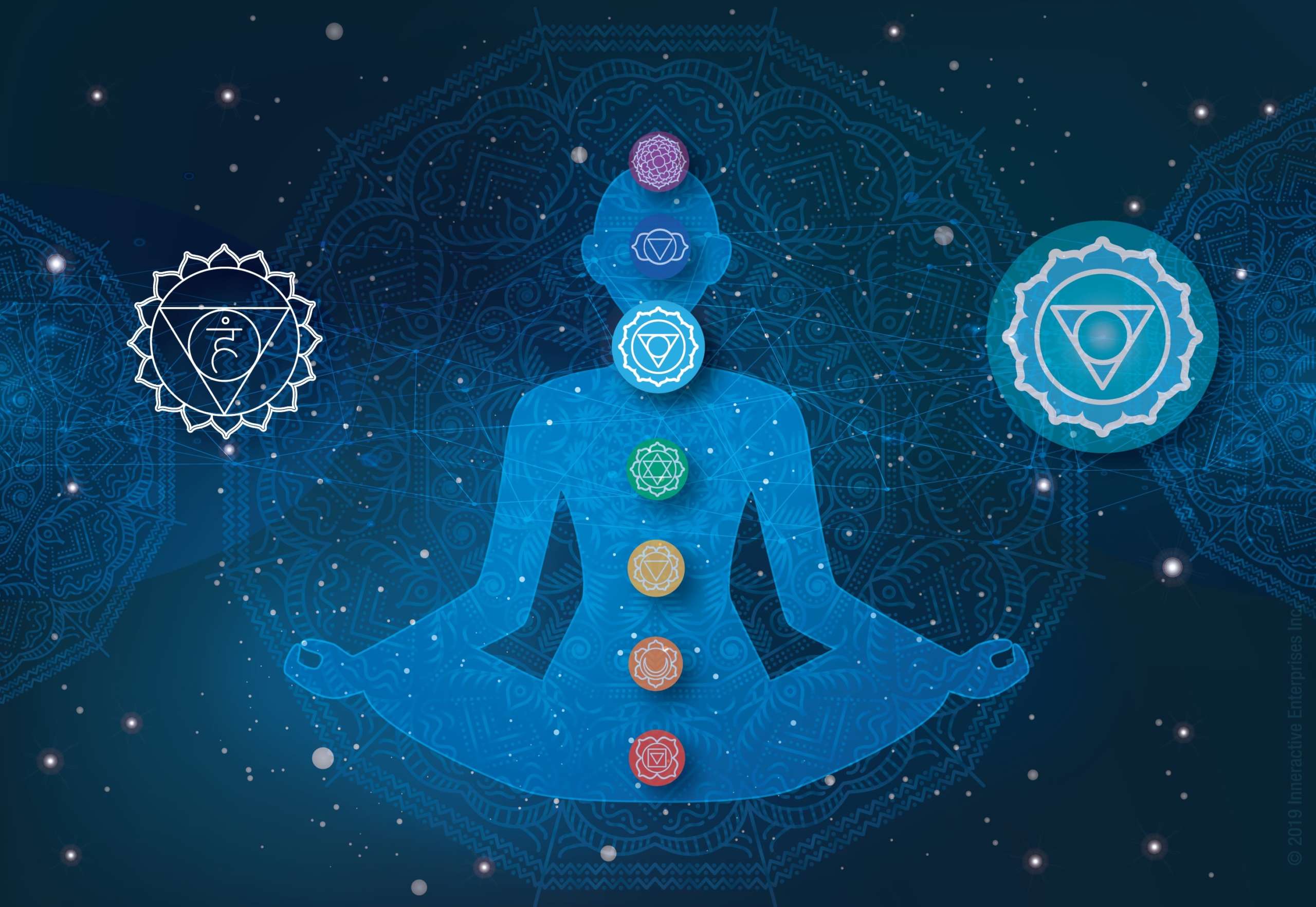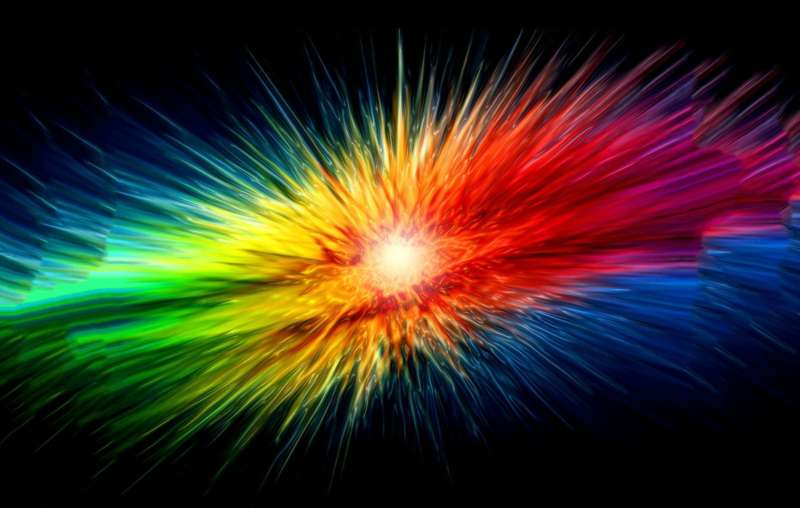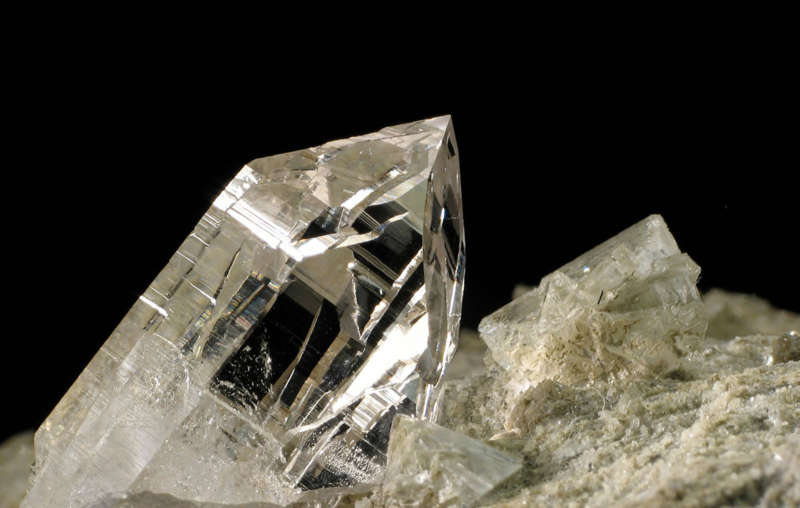What are the Chakras?
According to Hinduism, one of the world's oldest religions first appeared in India (and more precisely according to one of its branches called Brahmanism), chakras are centers of energy located along the spine.
The word Chakra is a Sanskrit word (Sanskrit being the written language of India) meaning "wheel." Each chakra is an energy center that can be compared to a vortex or an energy node in constant motion, rotating around a fixed point.
Chakras are nodes for the energy channels that pass through our bodies. There are seven main chakras and thousands of secondary chakras. From a Western point of view, they correspond to the main nervous plexus of our body. A nervous plexus is a complex branching network of nerve fibers that intersect and exchange information.
It is not possible for you to see your chakras when you are in a state of ordinary consciousness, but you can still use them and enjoy their benefits. Your chakras can be activated by practicing various spiritual disciplines such as Hinduism, yoga, meditation and other awareness techniques.
In the illustration below, the chakras are presented in the order in which they must be activated, one by one, so that you gradually ascend from the imperfect human state to the perfect state of a fully awakened spiritual being.

The 7 chakras of the human body
The 1st Chakra – Chakra Root – Muladhara.
This is the founding Chakra. The word Muladhara means "root." It is located in the pelvic area, between your sexual organs and your anus.
Muladhara controls the transmission of our basic instinct for survival, which keeps us alive. It also commands the collective subconscious, or collective memory, as opposed to a person's conscious individual memory.
It allows you to capture the energy of the Earth in which you are rooted and keep your feet firmly planted on the ground.
By working properly, it keeps you firmly anchored to reality and allows you to stay in touch with concrete reality and the material world. It is the intermediary between cosmic energy and the physical plane.
The 2nd Chakra – Sacred Chakra – Svadhishana.
The Sanskrit name of the sacred chakra in the Hindu model is "Svadhistana," which means "The place of self habitation" or more commonly called "The Seat of the Self." It represents what psychoanalysts call the individual subconscious. It is located between your coccyx (or sacred plexus) and your navel, exactly three finger widths below.
The sacred chakra represents the energy of creation and is associated with reproductive organs. It is also the location of the uterus in a woman's body. The sacred chakra houses the energy that is associated with sexuality, gender identity, sensations, pleasure, movement, education and emotions.
While the first chakra (root) is associated with the Self, the second chakra (sacred) is associated with the energy of the connection to others. Because the sacred chakra is associated with number two and our relationship with others, it is also associated with friendships, romantic partnerships, motherhood/parenthood and all the emotions associated with each. Because the sacred chakra is associated with creation, it is also associated with creativity.
The 3rd Chakra – Solar – Manipura.
The Manipura Chakra, commonly known as Plexus Solar, is the third chakra of the Hindu tradition. It is located in the upper part of the stomach, resting on the diaphragm and just under the ribcage. It is the center of your personal power and it embodies the energy of action, personal limits and purpose. Manipura energy is associated with your free will, your mental/intellectual abilities and the formation of your personal opinions and beliefs. This energy is expressed through discipline, independence, work ethic and self-confidence. The solar plexus chakra is also the area where we feel these "butterfly sensations" in the stomach, when we feel frightened or helpless. In this chakra, we find our ability to form ideas, transmit wisdom, make judgments and form opinions. The energy of the solar plexus influences the concern of social status and self-image.
Just as root and sacred chakras are respectively associated with the elements of earth and water, the solar plexus chakra is most often associated with the Fire element, as it is related to heat, energy and light.
The 4th Chakra – Heart – Anahata.
The heart chakra, located in the center of the chest, is the fourth chakra of the Hindu chakra model. It is known as "Anahata" in Sanskrit, which translates as "unsuscathed, unscathed, undefeated". Unsurprisingly, the chakra of the heart embodies the energy of connection and love (for oneself as for others).
The chakra of the heart is embodied by the element of air, as in the energy of breathing, movement and space, which is connected with all things. "Because the heart chakra is related to the air element, it is accessible through breathing. Hindus call the breath "prana," which means "first unity," and they believe it contains the essence of all vitality and nourishment, being the point of union between the mental and physical worlds. Opening the breath, releasing the tensions that tighten it, is a way to access the chakra of the heart.
The heart chakra is associated with the experience of compassion, empathy, forgiveness, acceptance, personal transformation and growth, as well as the ability to cry and ultimately achieve peace. The heart chakra is the central chakra in the seven chakras, thus merging the physical (lower chakras) with the spiritual (upper chakras). This is why the heart chakra is known as the bridge between the earthly and the spiritual.
When the heart chakra is open and in balance, we feel a deep connection with everything and everyone around us, appreciate and see beauty in all things, and are able to give and receive love easily. Gratitude, appreciation and compassion (for oneself as for others) are states associated with a healthy, open and balanced heart chakra.
The 5th Chakra – Gorge – Vishuddha.
The term Vishuddha means "purity" in Sanskrit. Located at the throat, it controls the quality of your voice and the sounds you make.
Chakra Vishuddha regulates the proper functioning of your thyroid glands as well as your vocal cords. When this chakra works properly, it gives you a clear and calm voice and makes you an excellent speaker, someone who can skillfully shape your words, someone who is gifted for communication and persuasion.
The throat is important because it allows you to use your voice to express yourself, to exchange thoughts and emotions with others. When this chakra is blocked, you will have problems expressing yourself clearly and communicating.
The throat chakra also corresponds to your hearing and listening ability. When it works properly, it makes you very attentive to others and their problems. If this is not the case and the Chakra is blocked, you are not really interested or concerned about the problems of others, but only your own, by your little "JE."
The 6th Chakra – The Third Eye – Ajna.
The Ajna Chakra is the best known of the Chakras because it corresponds to the Third Eye. The word Ajna means "Conscience" in Sanskrit. It is located at the forehead, between your eyebrows, at the root of your nose.
In addition to being a symbol, it is the seat of consciousness and direct understanding of the reality of the world, which hides behind the appearances you perceive with your usual senses. The awakening of this chakra removes the veil of appearances and allows you to see the true nature of beings and objects.
It is often associated with the pituitary gland, a small endocrine gland the size of a pea, located in a small bone cavity at the base of the brain. The Ajna Chakra is the seat of all processes of consciousness. It controls the appearance and use of additional sensory powers and plays an important role in the quality of your creativity.
The Ajna Chakra is called the third eye because when it is awake, it allows you to access true spiritual knowledge. In general, a person must travel a long spiritual path and achieve a significant elevation of the ordinary consciousness to awaken it.
When it works properly, it gives you clarity of mind. It improves your intuition, concentration and compassion and allows you to make predictions about the future. When it is not open, you remain physically stranded, thinking only of amassing money and goods, without worrying about your spiritual well-being or personal development.
The 7th Chakra – Crown – Sahaswara.
Also called the Crown Chakra, the Sahasrara Chakra is the ultimate seat of human fulfillment. It is located at the crown of the skull and is usually represented by a lotus flower with a thousand petals, hence its name.
The Crown Chakra is like a polar antenna, a spiritual center connected to the Universal Energy of the Cosmos, which is at the origin of the creation of the world. It is awakened during the spiritual development of a human being and gives access to what is called enlightenment or ultimate realization.
It is considered the center of intelligence, consciousness and knowledge, and it is through this chakra that universal energy enters the human body. The person who has succeeded in awakening this spiritual center has unlimited powers.
The awakening of the chakras
Although you can activate your chakras in the order you want, it is nevertheless recommended, especially at the beginning, to follow the correct process of activation of the chakras, whether you are a beginner or you have already practiced techniques of awakening your chakras.
The process is to systematically awaken your chakras from the first (the Muladhara chakra) to the last (the Sahasrara Chakra) so that you can be assured that all your 7 chakras have been properly activated.
The awakening of the chakras is an energetic practice prevalent in many branches of Hinduism and several Eastern spiritual traditions. This awakening of the chakras is not technically difficult. Above all, this practice requires a strong belief and regular training.
The awakening and use of your chakras will not only have a positive impact on your personal and spiritual development, but also on your body and mind in the long term. Indeed, activated and regularly used chakras contribute to the good health of your body, help protect you from diseases and allow you to stay in shape until a very advanced age.


